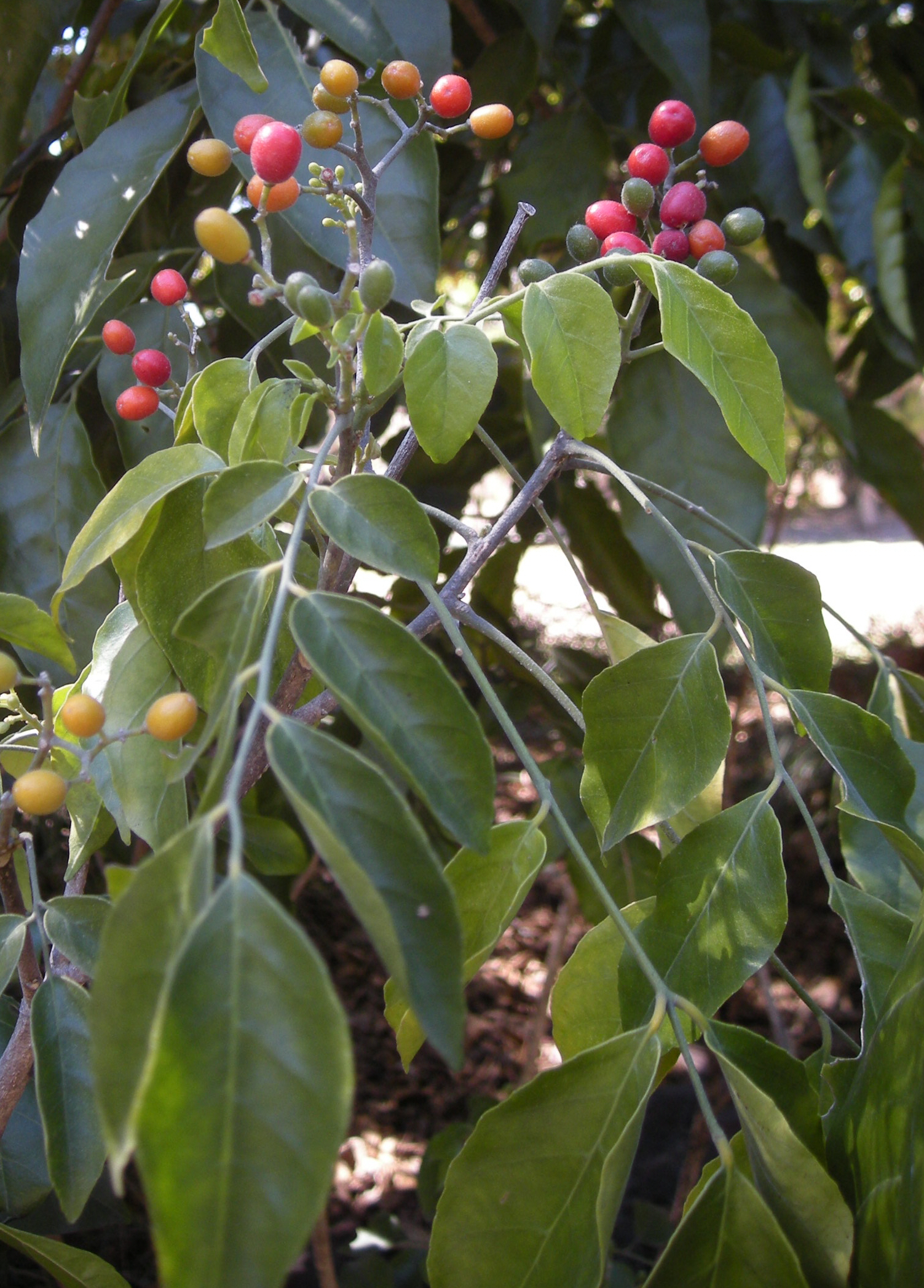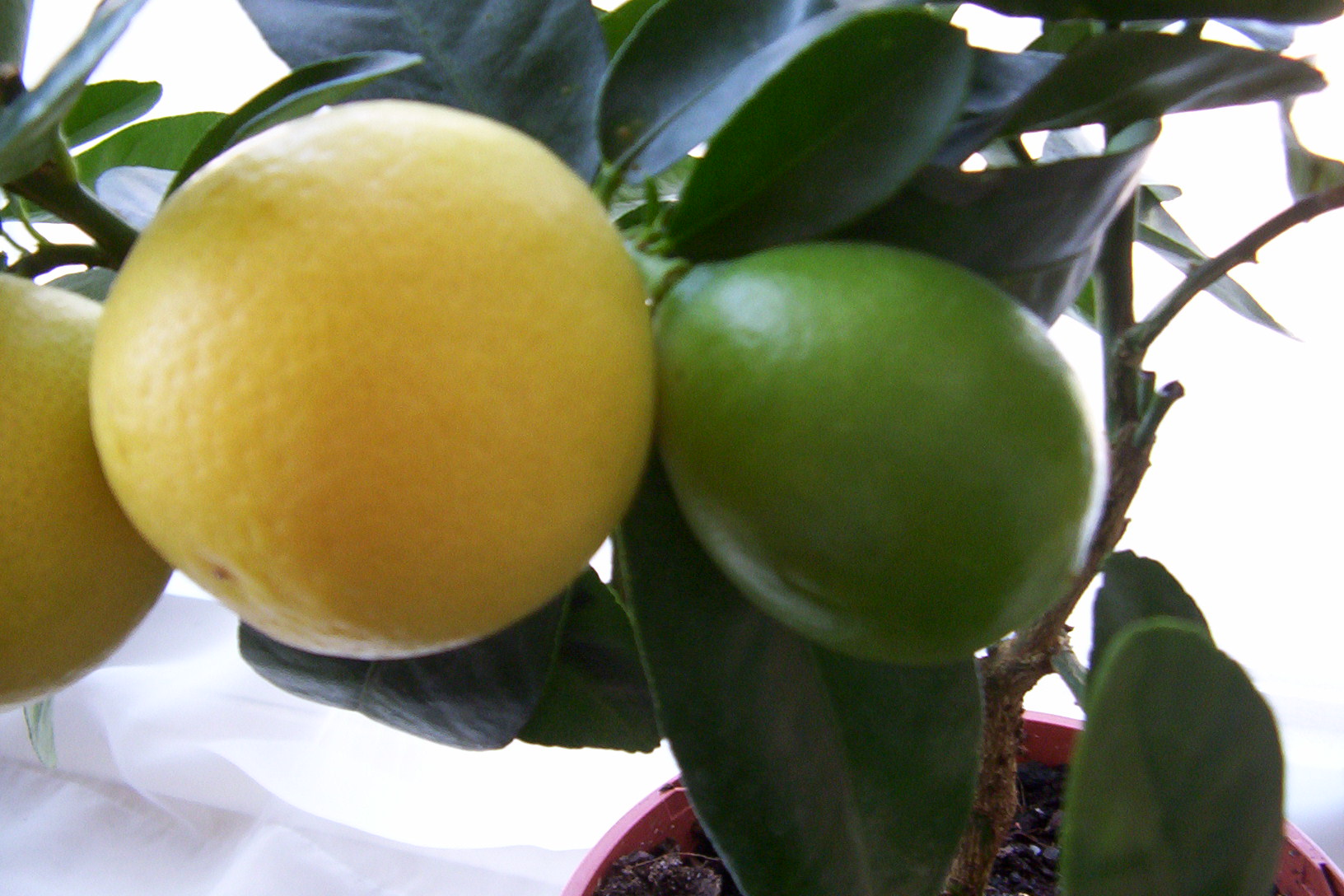|
Swinglea
''Swinglea'' is a monotypic genus of flowering plants belonging to the family Rutaceae. It only contains a single species, ''Swinglea glutinosa''. It is native to the Philippines. The genus name of ''Swinglea'' is in honour of Walter Tennyson Swingle (1871–1952), an American agricultural botanist who contributed greatly to the classification and taxonomy of citrus. The genus has one known synonym of ''Chaetospermum'' . The Latin specific epithet In taxonomy, binomial nomenclature ("two-term naming system"), also called nomenclature ("two-name naming system") or binary nomenclature, is a formal system of naming species of living things by giving each a name composed of two parts, bot ... of ''glutinosa'' is derived from ''gluten'' meaning glue. Both the genus and the species were first described and published in J. Arnold Arbor. Vol.8 on page 131 in 1927. References {{Taxonbar, from1=Q15930620, from2=Q5398122 Aurantioideae Monotypic Rutaceae genera Aurantioideae ... [...More Info...] [...Related Items...] OR: [Wikipedia] [Google] [Baidu] |
Aurantioideae
Aurantioideae (sometimes known as Citroideae) is the subfamily within the rue and citrus family (Rutaceae) that contains the citrus. The subfamily's center of diversity is in the monsoon region of eastern Australasia, extending west through South Asia into Africa, and eastwards into Polynesia. Notable members include citrus (genus ''Citrus''), bael (''Aegle marmelos''), curd fruit (''Limonia acidissima''), species of genus ''Murraya'' such as curry tree (''M. koenigii'') and orange jessamine (''M. paniculata''), and the small genus ''Clausena''. Description Aurantioideae are smallish trees or large shrubs, or rarely lianas. Their flowers are typically white and fragrant. Their fruit are very characteristic hesperidia, usually of rounded shape and colored in green, yellowish or orange hues. Taxonomy The subfamily has been divided into two tribes, the ancestral Clauseneae and the more advanced Citreae, as in a 1967 classification. A 2021 classification by Appelhans et al. ba ... [...More Info...] [...Related Items...] OR: [Wikipedia] [Google] [Baidu] |
Aurantioideae Genera
Aurantioideae (sometimes known as Citroideae) is the subfamily within the rue and citrus family (Rutaceae) that contains the citrus. The subfamily's center of diversity is in the monsoon region of eastern Australasia, extending west through South Asia into Africa, and eastwards into Polynesia. Notable members include citrus (genus ''Citrus''), bael (''Aegle marmelos''), curd fruit (''Limonia acidissima''), species of genus ''Murraya'' such as curry tree (''M. koenigii'') and orange jessamine (''M. paniculata''), and the small genus ''Clausena''. Description Aurantioideae are smallish trees or large shrubs, or rarely lianas. Their flowers are typically white and fragrant. Their fruit are very characteristic hesperidia, usually of rounded shape and colored in green, yellowish or orange hues. Taxonomy The subfamily has been divided into two tribes, the ancestral Clauseneae and the more advanced Citreae, as in a 1967 classification. A 2021 classification by Appelhans et al. bas ... [...More Info...] [...Related Items...] OR: [Wikipedia] [Google] [Baidu] |
Walter Tennyson Swingle
Walter Tennyson Swingle (January 8, 1871 – January 19, 1952) was an American agricultural botanist who contributed greatly to the classification and taxonomy of citrus. Biography Swingle was born in Canaan, Pennsylvania, and moved with his family to Kansas two years later. He graduated from the Kansas State Agricultural College in 1890, and studied at the University of Bonn in 1895–96 and 1898. Swingle married Lucie Romstaedt in 1901; she died in 1910. He married Maude Kellerman, daughter of William Ashbrook Kellerman, in 1915 and they had four children. He died in Washington, D.C., on January 19, 1952. In 1927, botanist Elmer Drew Merrill published ''Swinglea'', which is a genus of flowering plants from the Philippines, belonging to the family Rutaceae and named in Walter Tennyson Swingle's honor. Contribution to US agricultural industry Swingle worked at the United States Department of Agriculture (1891), investigated subtropic fruits, established laboratories in Flor ... [...More Info...] [...Related Items...] OR: [Wikipedia] [Google] [Baidu] |
Elmer Drew Merrill
Elmer Drew Merrill (October 15, 1876 – February 25, 1956) was an American botanist and taxonomist. He spent more than twenty years in the Philippines where he became a recognized authority on the flora of the Asia-Pacific region. Through the course of his career he authored nearly 500 publications, described approximately 3,000 new plant species, and amassed over one million herbarium specimens. In addition to his scientific work he was an accomplished administrator, college dean, university professor and editor of scientific journals.Archives of the Arnold Arboretum Early life Merrill and his twin brother, Dana T. Merrill, were born and raised in the small village of Auburn, Maine, East Auburn, Maine. They were the youngest of six children by Daniel C. Merrill and Mary (Noyes) Merrill. Merrill showed an early interest in natural history, collecting and identifying plants, birds' eggs, rocks, and minerals. In 1894 he entered the University of Maine with the intention of stu ... [...More Info...] [...Related Items...] OR: [Wikipedia] [Google] [Baidu] |
Francisco Manuel Blanco
Manuel María Blanco Ramos known as Manuel Blanco (1779 – 1845) was a Spanish friar and botanist. Biography Born in Navianos de Alba, Castilla y León, Spain, Blanco was a member of the Augustinians, Augustinian order of friars. His first assignment was in Angat, Bulacan, Angat in the province of Bulacan in the Philippines. He subsequently had a variety different assignments. Towards the end of his life, he became the delegate of his order in Manila, traveling throughout the archipelago. He is the author of one of the first comprehensive flora of the Philippines, ''Flora de Filipinas. Según el sistema de Linneo'' (Flora of the Philippines according to the system of Linnaeus) which followed after the work done by Georg Joseph Kamel. The first two editions (Manila, 1837 and 1845) were unillustrated. Celestine Fernandez Villar (1838-1907), together with others including Antonio Llanos, published an illustrated posthumous edition from 1877 to 1883, printed by C. Verdaguer of Bar ... [...More Info...] [...Related Items...] OR: [Wikipedia] [Google] [Baidu] |
Monotypic
In biology, a monotypic taxon is a taxonomic group (taxon) that contains only one immediately subordinate taxon. A monotypic species is one that does not include subspecies or smaller, infraspecific taxa. In the case of genera, the term "unispecific" or "monospecific" is sometimes preferred. In botanical nomenclature, a monotypic genus is a genus in the special case where a genus and a single species are simultaneously described. In contrast, an oligotypic taxon contains more than one but only a very few subordinate taxa. Examples Just as the term ''monotypic'' is used to describe a taxon including only one subdivision, the contained taxon can also be referred to as monotypic within the higher-level taxon, e.g. a genus monotypic within a family. Some examples of monotypic groups are: Plants * In the order Amborellales, there is only one family, Amborellaceae and there is only one genus, '' Amborella'', and in this genus there is only one species, namely ''Amborella trichopoda. ... [...More Info...] [...Related Items...] OR: [Wikipedia] [Google] [Baidu] |
Flowering Plant
Flowering plants are plants that bear flowers and fruits, and form the clade Angiospermae (), commonly called angiosperms. The term "angiosperm" is derived from the Greek words ('container, vessel') and ('seed'), and refers to those plants that produce their seeds enclosed within a fruit. They are by far the most diverse group of land plants with 64 orders, 416 families, approximately 13,000 known genera and 300,000 known species. Angiosperms were formerly called Magnoliophyta (). Like gymnosperms, angiosperms are seed-producing plants. They are distinguished from gymnosperms by characteristics including flowers, endosperm within their seeds, and the production of fruits that contain the seeds. The ancestors of flowering plants diverged from the common ancestor of all living gymnosperms before the end of the Carboniferous, over 300 million years ago. The closest fossil relatives of flowering plants are uncertain and contentious. The earliest angiosperm fossils ar ... [...More Info...] [...Related Items...] OR: [Wikipedia] [Google] [Baidu] |
Rutaceae
The Rutaceae is a family, commonly known as the rueRUTACEAE in BoDD – Botanical Dermatology Database or family, of s, usually placed in the order . Species of the family generally have s that divide into four or five parts, usually w ... [...More Info...] [...Related Items...] OR: [Wikipedia] [Google] [Baidu] |
Philippines
The Philippines (; fil, Pilipinas, links=no), officially the Republic of the Philippines ( fil, Republika ng Pilipinas, links=no), * bik, Republika kan Filipinas * ceb, Republika sa Pilipinas * cbk, República de Filipinas * hil, Republika sang Filipinas * ibg, Republika nat Filipinas * ilo, Republika ti Filipinas * ivv, Republika nu Filipinas * pam, Republika ning Filipinas * krj, Republika kang Pilipinas * mdh, Republika nu Pilipinas * mrw, Republika a Pilipinas * pag, Republika na Filipinas * xsb, Republika nin Pilipinas * sgd, Republika nan Pilipinas * tgl, Republika ng Pilipinas * tsg, Republika sin Pilipinas * war, Republika han Pilipinas * yka, Republika si Pilipinas In the recognized optional languages of the Philippines: * es, República de las Filipinas * ar, جمهورية الفلبين, Jumhūriyyat al-Filibbīn is an archipelagic country in Southeast Asia. It is situated in the western Pacific Ocean and consists of around 7,641 islands t ... [...More Info...] [...Related Items...] OR: [Wikipedia] [Google] [Baidu] |
Citrus Taxonomy
Citrus taxonomy refers to the botanical classification of the species, varieties, cultivars, and graft hybrids within the genus ''Citrus'' and related genera, found in cultivation and in the wild. Citrus taxonomy is complex and controversial. Cultivated citrus are derived from various citrus species found in the wild. Some are only selections of the original wild types, many others are hybrids between two or more original species, and some are backcrossed hybrids between a hybrid and one of the hybrid's parent species. Citrus plants hybridize easily between species with completely different morphologies, and similar-looking citrus fruits may have quite different ancestries. Some differ only in disease resistance. Conversely, different-looking varieties may be nearly genetically identical, and differ only by a bud mutation. Detailed genomic analysis of wild and domesticated citrus cultivars has suggested that the progenitor of modern citrus species expanded out of the Himalayan ... [...More Info...] [...Related Items...] OR: [Wikipedia] [Google] [Baidu] |
Binomial Nomenclature
In taxonomy, binomial nomenclature ("two-term naming system"), also called nomenclature ("two-name naming system") or binary nomenclature, is a formal system of naming species of living things by giving each a name composed of two parts, both of which use Latin grammatical forms, although they can be based on words from other languages. Such a name is called a binomial name (which may be shortened to just "binomial"), a binomen, name or a scientific name; more informally it is also historically called a Latin name. The first part of the name – the '' generic name'' – identifies the genus to which the species belongs, whereas the second part – the specific name or specific epithet – distinguishes the species within the genus. For example, modern humans belong to the genus ''Homo'' and within this genus to the species ''Homo sapiens''. ''Tyrannosaurus rex'' is likely the most widely known binomial. The ''formal'' introduction of this system of naming species is credit ... [...More Info...] [...Related Items...] OR: [Wikipedia] [Google] [Baidu] |
Monotypic Rutaceae Genera
In biology, a monotypic taxon is a taxonomic group (taxon) that contains only one immediately subordinate taxon. A monotypic species is one that does not include subspecies or smaller, infraspecific taxa. In the case of genera, the term "unispecific" or "monospecific" is sometimes preferred. In botanical nomenclature, a monotypic genus is a genus in the special case where a genus and a single species are simultaneously described. In contrast, an oligotypic taxon contains more than one but only a very few subordinate taxa. Examples Just as the term ''monotypic'' is used to describe a taxon including only one subdivision, the contained taxon can also be referred to as monotypic within the higher-level taxon, e.g. a genus monotypic within a family. Some examples of monotypic groups are: Plants * In the order Amborellales, there is only one family, Amborellaceae and there is only one genus, ''Amborella'', and in this genus there is only one species, namely ''Amborella trichopoda.'' ... [...More Info...] [...Related Items...] OR: [Wikipedia] [Google] [Baidu] |





